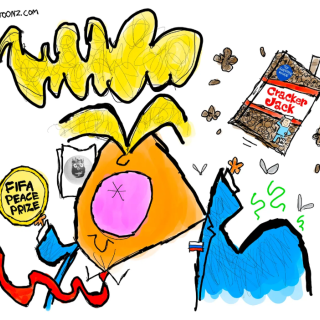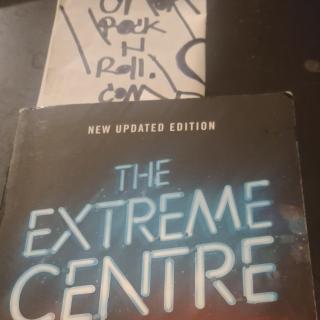I loved school from the minute I set foot in kindergarten. Blessed with two older sisters who brought home their schoolwork and parents who read, I was an apt and eager pupil when my older sister, Marva, taught me to read when I was four. (Since she is five years older, I’m sure it was under the guise of her babysitting and bossing me around, but who knew?) As someone who has earned a doctorate, is a professor, and a writer, I am convinced that teaching someone to read is the most valuable of gifts. I’ll always be grateful to Marva for it.
I attended Highland Avenue Elementary School here in Columbus, and had the most wonderful third-grade teacher in Carolyn Brunk Keller. The thing I liked most about her is that she loved to read, noticed that I did, too, and gave me every opportunity to do so. After that year, nothing would do but that I had to become a teacher. While I did a number of things before that, I finally landed in my chosen profession, albeit teaching at the college level rather than third grade as I assumed I would. When I saw Reading with Patrick in the book store, I was immediately intrigued.
Michelle Kuo was the kind of teacher I wish for my young nieces and nephews: bright, caring, in love with words, highly motivated, and well prepared. A first generation American–her parents immigrated from Taiwan–she spent her growing up years battling with her parents over the educational and career choices she made, choices that were so very different from theirs. They wished for her a normallife as they saw it: obtaining a college degree in a well-paying field, meeting the right man, falling in love, marriage and family. Kuo, however, was determined to live her life on her own terms. A gender and social studies major, she decided to join Teach for America for two years, and took a job at an alternative school in Helena, Arkansas, a city and state that were still segregated and dirt poor more than half a century after Brown v Board of Education of Topeka, KS in 1954.
The students in Kuo’s class were years behind their grade level in reading and sometimes rowdy. Floundering at first, she focused on literacy and literature; Kuo gained her sea legs and her students began to thrive. In spite of herself and the teachers’ unwritten rule, she had a favorite student. Patrick, who was sixteen years old and in the eighth grade, was quiet, bright and quickly took to reading. He even won the school’s most improved student award. Of all her students, he seemed to be the one most likely to succeed.
When Kuo’s two years of service were completed, she left Helena to enroll in Harvard Law School, and told Patrick she’d be back to see him graduate. Three years later at the end of law her studies, Kuo learned that Patrick was in prison for murder. She hit the pause button on her life; Kuo left a job, apartment, and friends to move back to Helena to see him.
Kuo was shocked that the school was closed for lack of teachers, and had been allowed to deteriorate. The wonderful library she had developed was gone, as were the students. When she asked to see some official school records, she was told they didn’t exist. There was a list, however, of the students who had dropped out of school, and virtually all those students had been placed on the list solely because of their lack of attendance. Students who were labeled as whereabouts unknown but were still there in the district often made the list, and truant students were automatically labeled as dropouts.
At her first meeting with Patrick, she was dismayed that he had lost virtually all the reading and writing skills he had learned in school, but with steady work and encouragement, he began to catch up. Kuo assigned him homework which she marked up just as though he were attending a regular school. At first she limited her visits to once or twice a week, then she began seeing Patrick almost daily. Kuo set up a miniature library in the visiting room, and they read a variety of works. But it was his introduction to poetry that unlocked Patrick’s considerable potential. He became an expressive writer and more confident person. As their work progressed, Kuo met his family, helped him connect with his toddler daughter, and even became a co-conspirator in smuggling tobacco and papers into the prison for Patrick so he could roll his own cigarettes.
Kuo and Patrick weren’t always on the same page, however. She was upset when he wrote in response to an assignment that his best days in prison were the days on which she visited, partly, “because you sexy.” Patrick was baffled by the scolding she gave him about the essay. He was writing from a place of reality and truth; he didn’t know that it was an inappropriate way to talk about his teacher. Kuo was also livid when she found out the tobacco she had been smuggling into the prison for him was marijuana sent by his father. Had they been caught, Kuo could have lost her law license, and Patrick would have been sucked ever more deeply into the school-to-prison pipeline.
This book is not To Sir, with Love orBlackboard Jungle. Patrick did indeed kill a man–his remorse was genuine and deep–yet he didn’t know exactly what he had been charged with or any of the details of his case. Like most poor criminals, he was assigned an underpaid, overworked court-appointed attorney, and languished in prison for months before his case began to advance through the system due to Kuo’s help. Patrick’s father is a convicted felon, and his over burdened mother worked long hours to hold the family together. Her untimely death sucked Patrick and her family into a whirlpool of sadness and uncertainty. Released from prison, he has struggled to find meaningful work. In the end Patrick is still a poor, undereducated black man in America who served time for a felony.
Like many of us who teach, Kuo desperately wanted to have a positive impact on her students. I can identify with this. I thought I would be the female, African American version of the teacher in Goodbye Mr. Chips. After twenty-four years of teaching, however, I have learned that if I’ve made a difference for even one student, I’ve done something important and profound.
I had not seen Mrs. Keller since 1964, and when I tried to find her after all these years, I discovered that she had died about twelve years ago. I think of her often, and have met her husband, two sons, and three grandchildren, and they now know the tremendous impact she had on me, and no doubt, scores of other students.
If you read this, damn skippy you should thank a teacher.
Dr. Marilyn K. Howard earned a BA in criminal Justice from Ohio Dominican College; an MA in political science from The Ohio State University (Thesis: The Entrance of Black Voters Into the Mississippi Electorate) and her PhD in American history from The Ohio State University (Dissertation: Black Lynching in the Promised Land: Mob Violence in Ohio 1876 - 1916). She is an associate professor in the Department of Humanities at Columbus State Community College. Dr. Howard has twice received the Distinguished Teaching Award from Columbus State, and was twice recognized as an outstanding staff member by the National Institute for Staff and Organizational Development. She was also named a top educator by Ohio magazine. Dr. Howard has served as an editor of the Southern Historian, a freelance book critic for the Columbus Dispatch and Ohioana Library. She has published essays in a number of anthologies, including the Encyclopedia of Racial Violence in America and the Encyclopedia of Jim Crow. She continues to conduct research on the lynching of black men by white mobs in Ohio.



